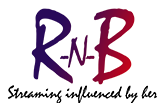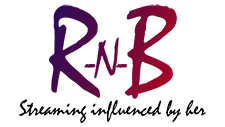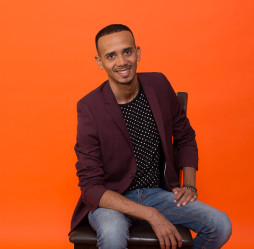TruEvolution is a nonprofit organization dedicated to fighting for LGBT justice and advocating for the prevention and elimination of HIV/AIDS in America. Gabriel is also known for his work and ideas on addressing social disparities through education, advocacy, health & wellness programs and services.
Q.I think a lot of us want to try and “save the world” so to speak, but you actually stepped out and are doing it with strong focused goals. How did that work? How did you go from seeing things that needed to be addressed to actually putting together this organization?
A.The name of our organization actually summarizes your question best. It’s called TruEvolution. This entire process for how our organization came to do the work the way we do it , how we approach it and where we see needs has been an evolution. We’ve evolved. Our organization actually did not start off doing HIV work and we did not start off doing LGBT work. That was not our beginning. We started in 2007, and our foundation was actually to create a pipeline for youth of color to get from poverty to prosperity. We wanted youth of color to have access to the resources in elevating their lives and address the disparities that hold youth of color back from becoming successful.
Q.How did you address disparities?
A.Disparities is a big broad word, and it basically means what are some of the social injustices or gaps in our community that impair or stagnate people of color from having full healthy well lives. There’s poverty, health issues, racism, misogyny for women, it’s a whole bunch of things. In the beginning we did a leadership program and our leadership academy was basic 101. It was looking at ourselves and creating a type of identity overcoming issues of racism and poverty, such as how do we access higher education, how do we access jobs, how to do financial planning, just the basic rubric for becoming successful. What we found within the first year was that many youth don’t even have an equitable or equal playing field in life to even begin tackling those things. The schools are a present pipeline that drives young men of color, disproportionally African- American men, from school to prison! It stems from a whole series of unequal wealth distribution, inadequate educational polices, disproportional levels of crimes surrounding school areas and certain legislation like the “No Child Left Behind” act. Those types of things actually further perpetuate the issues against men of color. Sometimes when you’re talking to a kid about going to college, they are like, “Listen, I’m about to drop out of high school. I’m failing, I have a father who abuses my mother, I have a mother who works two jobs, I’m dealing with issues in being black and I‘m dealing with issues being a woman.”
Q. How did you come about zooming in on LGBT, and in particularly HIV positive LGBT?
A.What I began to find, and this kind of grew for me because I started the organization at eighteen years old and I was still growing and developing myself, but that the LGBT youth disproportionally experience a level of disparity that our heterosexual counterparts do not. So while heterosexual youth, for example, experience a certain level of domestic violence, LGBT youth experience domestic violence three times more than our heterosexual counterparts. Literally. This is statistics. LGBT youth are more likely to experience depression and anxiety. They are more likely to have suicidal ideation. They are more likely to actually commit suicide.
As far as HIV is concerned, black gay men disproportionally experience serial conversion, which mean they become HIV positive, so they experience HIV/ AIDS disproportionally more than any other subgroup in the entire Unite States of America. Black gay men between the ages of 14 to 29 years old are the largest group of incidence in the current population, incidence meaning who is getting HIV the most. Closely followed by African-American women. They are trailing behind them, they are right behind them. And so all of these things kind of came out of just doing a leadership program, doing the youth development. These issues, these conversations, these traumas. People are experiencing intersectional issues, they are not just experiencing issues as a black person, they are experiencing issues as a black man, they are experiencing issues as a black gay man.
The 101 to developing any sort of business model whether it is a nonprofit or for profit is to fill a gap, to fill a need. So right now we have a gap across the entire country of lack of services that address issues in the LGBT community and specifically we have a lack of services that address HIV/ AIDS as a disparity in LBGT community.
Now it’s popularized, we hear about it, you hear about the “Testing Makes Us Stronger” campaign, you hear about “You Know Us” organization, you might see billboards in Los Angeles that talk about the issues, or read articles in magazines and see shows that are popular talk about it. But just because it’s communicated in PR and in advertising or marketing doesn’t necessarily mean that it’s reflected in the services that are being offered. That doesn’t mean that the services offered actually meet those needs. It takes people to actually put the boots on the ground to make that happen, to actually advocate for those dollars, and so our organization shifted about five years ago to focus more on the LGBT community.
Because like you just said, you can’t save the world, you can’t save everybody, but what you can do is become a specialist, you can become an expert and you can become someone who develops this really targeted passion for a specific community. Creating a laser focus that really helps out a specific community and population. For many of us developing that it comes from our own lived experiences. So who better to help counsel a rape victim than someone who was sexually assaulted? Who better to do outreach to recruit young black or Latino gay men to go in testing than someone who is a young Latino or black gay man? I’m gay, I’m black, someone who has actually experienced that to counsel someone. I am HIV positive. So my personal experience is as a gay male, actually as an African– Latino gay man who is living with HIV. I contracted HIV as a result from being sexually assaulted. So me, my own personal experience, informs and empowers me to relate and connect on some level , not all levels, but some levels with those in my community who are disproportionally experiencing these disparities . What I found is that sometimes I can’t relate. I can’t relate to every gay black man that has HIV. For one, I work all over the country, people in the South have a very different experience with it than people in California.
Q. Being from the South, I totally get how two people in the same situation may feel totally different depending on the culture they live in and the mindset of it. To me, there is such a heaviness, such a closed in feeling of despair that hung over the community back home. From your travels and working with people, what insight can you share on this?
A. I notice a different mindset of culture from people who live south of Wilshire to people who live north of Wilshire, just in LA. You have to remember that people are intersecting people with compounded issues. Issues of not only race, but gender, and sexual orientation and social upbringing, which brings in religious influences and cultural influences and also class. Capitalism in America has done a lot of devastating things to the psychosocial development of our community. Capitalism. This idea that nothing is ever enough. We quantify our worthiness by our economic value. That is why we have such a high homeless population. Because we just don’t care. And that is why we look at the homeless community in a very particular way. That is why we look at people that have been incarcerated, that have been in prison, in a very specific way. Because they don’t add any economic value to our community. In fact, they take economic value from our community. So capitalism and where we stand on our social ladders, our class ladder, that also plays a role. It’s not just one thing.
As far as the South, the difference is oppression. Historical oppression. Like racism, like misogyny, like stigma. Oppression. It is found at the institutional level and it’s found at the historical level in our community. It has very much internalized itself. And it cognates itself into the future generation. So black men have internalized the notion that they are unworthy. Women, women in general, or many of them, have internalized the notion that they are sexualized bodies. Now that’s not for everybody, that’s not in every example, that’s not in every instance. But we have repeatedly shown our oppression and our relegation of women. We have shown our debilitating acceptance of the deviance of black bodies. And that has internalized itself into our culture. I always say any dysfunction that you may see or highlight in communities of color is as a result of capitalism and racism. And so when you see black bodies attacking black bodies, it’s because of what white supremacy, capitalism, imperialism and white privilege has historically taught us and trained us. That we are unworthy, that we are vilified, that we are deviants, that we are less than, and we treat each other that way because that is how we see each other.
Yet, it also speaks of the power. The brilliance, the resilience and the genius of our people. That despite the centuries worth of oppression, the current state of discrimination, and racism and homophobia and violence and stigma and transphopia and misogyny and patriarchy, all of that –despite all of that –We rise! Despite that, we have people that have graced the history pages like Audre Lorde and Bell Hooks and James Baldwin and Maya Angelou and Cecily Tyson and all the amazing women and men of color who have done brilliant things. And people today. Bree Newsome, Patrisse Cullors, the co-founders of #blacklivesmatter, Barack Obama, Michelle Obama, Misty Copeland, you know, amazing creative, brilliant, genius, talented, fierce, fabulous, awesome mindsets, souls and bodies. They exist today because though we have internalized oppression and that its still in our community, right alongside it, is the genetic coding of our brilliance, it IS the stock that we are made of , it’s the ability to move beyond, to overcome. Society tells us that we could not be, they tell us that we should not be, and we just say, “Girl, I’m gonna get up and do it anyway.” Hello! And black single mothers get up and do it anyway. Black gay men, we experience so much oppression in the South and all parts of the country and we say, “We are going to get up and be ourselves anyway”. Ta-da! Now! And that just speaks of who we are.
Q.I see that you use arts, culture and performance to encourage wellness and prevention. Your blog has some amazing writers and you hold performances. I always felt there was some connection between the arts and healing, through being and living creatively. What do you think the tie in with that is?
A. I truly believe that people of color are creators. I think that is that is the God power that lives within us. We have that power to create. Historically people of color have always used arts and culture and creations and artistry as a form of communication. I mean all the way back to pre-diaspora, to our original roots, we used drawing and pictures as forms of communication and language.
We use spoken word poetry, dance and theatre performances as a way to communicate wellness and prevention in our AIDS Advocacy Night. What it does, I think, is it allows us to step out of the conditions of our own specific environment and to personify the possibilities for our lives. You may not be where you want to be in life, but when you’re dancing that is the ultimate form of where you want to be in life. When you’re singing, whether you are singing in a concert room with a hundred thousand people or whether you’re singing for your mama during a Christmas Eve dinner party, you are singing. And that is the height of where you want to be in life. And it allows you to dream. And the power of dream is amazing. What it does is it gives us self-advocacy, it gives us the inspiration, it gives us the drive, it gives us the power to step into life and to dare to do better and be better. And that is the starting point. For us to empower ourselves to move beyond disparity.
Q. The way HIV/AIDS was perceived when it first came out in the 80’s is a lot different than today as we know and understand so much more, but I feel there is still a lot of room for growth and understanding. Do you think in the next few years people will grow easier with the topic?
A. I definitely think that is already happening today, but we’re not there yet, we still have work. Particularly in places like in the South and the Southeast. You see that religious intolerance definitely adds to that. I think overall stigma, ignorance and fear of HIV kind of compounds that. And I think as we go and as we continue to tell these stories, share these messages to educate people on what the reality is it could –let me just speak to you a little information here. When someone HIV positive is on antiretrovirals, and if they take their medication consistently, they will hopefully achieve what is called viral suppression. Or that they are undetectable. What that means is that there is such a minute amount of HIV in their system. That reduces the chances of you transmitting the virus significantly. For example, you touch germs every day, you touch viruses every day. You touch doors, handles, bathrooms, everything , but just because you touch it doesn’t mean you are going to come down with the flu. That isn’t necessarily going to happen. There are a lot of factors that go into you getting the flu. How strong is your immune system, how often do you wash your hands, did you touch your mouth…there are all kinds of factors that go into whether you are going to host the bacteria from the virus that you came into contact, that it is going to transmit to you. Same concept with HIV , you don’t just touch HIV and then you get it. That is not how it works. It doesn’t work that way. There has to be a certain level of the virus that enters into your system, so when someone who is HIV positive is undetectable, the chances of them passing the virus to you is less than 3% and condoms are a little over 97% effective, it’s crazy when you think about it. So the risk with someone undetectable is about the same as using a condom.
So then the question becomes why are people willing to have sex, but not have sexual health conversations. What I mean by that is someone is more likely to hook up with someone using a condom and they don’t have any conversation about HIV or STD status. They did not go with them to get their test, you don’t know for sure they have been tested or diagnosed, and even if they tell you that they have they may not be telling you the truth. People are more likely to engage in sexual activity in those environments with a condom than they are to have an open conversation with someone who is HIV positive and have intercourse with that person who is undetectable. Wow! Why is it when statistically it’s the same level of risk? Well, it’s because of stigma. And fear. Because I know you have it. So I’m afraid of it. And the problem is that stigma is one of the contributing factors as to why HIV is continuing to spread. What happens with a lot of people is that they tell you, “Oh, yeah, I’m negative, I test all the time, I am HIV negative. “ That brings comfort to people. Even though you have no proof. Just the self omission of “negative” as your status brings comfort. So when someone is honest with you and open with you that they are positive you are afraid to educate yourself on the possibilities of engaging in a relationship, whether it be romantic or sexual. That is stigma, and that stigma perpetuates HIV.
Q. How can people help or volunteer for your organization?
A. We have several events that take place over the course of the year. We always use volunteers, so check out our website, fill out the volunteer form and you will be contacted regarding the next event we could use help with.
You know what really helps us a lot? Is people getting involved on social media, such as liking our page, our Facebook , sharing that with other people, that really helps a lot. It gives us a platform to be able to connect with people. Community can be created anywhere, including online.


